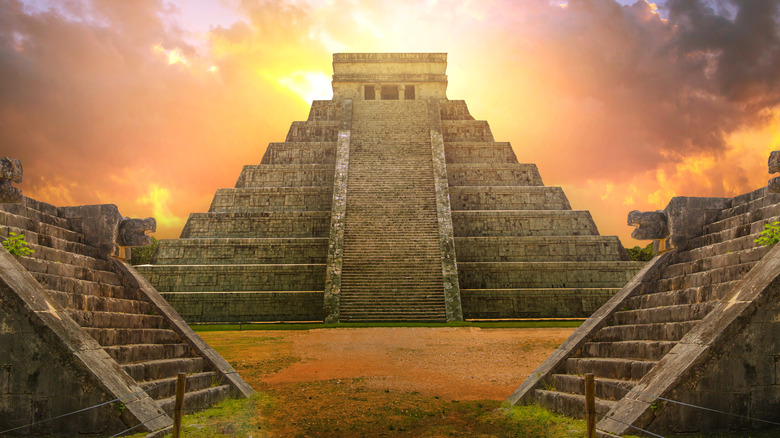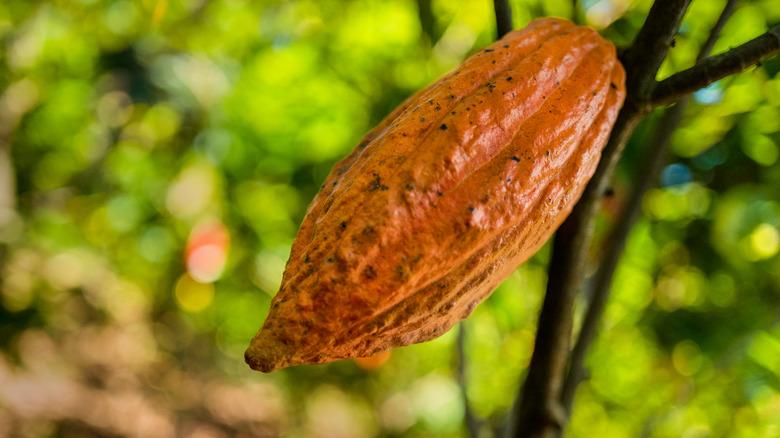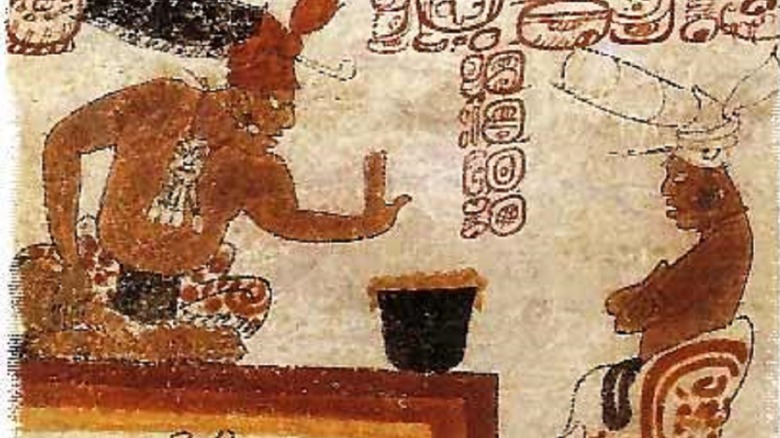Here's What Ancient Mayans Used For Currency
The ancient Maya remain a fascinating enigma. As History reports, their civilization peaked during the sixth century, when the Mesoamerican people developed sophisticated systems of writing, their remarkable pyramids, and deep knowledge of astronomy, which they put to work in devising their calendar. There was also reportedly no concept of the naught or zero in math until the Maya.
Simultaneously simplifying and further convoluting math problems, then, is just one of the Mayans' many achievements. They also devised a truly inspired and rather delicious-sounding form of currency.
Now, the virtues of chocolate don't tend to be lost on many people today. The sweet treat is consumed in almost frightening quantities. According to the World Cocoa Foundation, the candy industry in the United States "shipped over 1.59 billion pounds of chocolate and chocolate type confectionery worth $11.2 billion" in 2010 alone. For the Maya, though, chocolate had an even more direct impact on the economy, in the shape of chocolate currency.
A classic take on chocolate
For the Maya, chocolate was not the neatly-wrapped treat that so many of us enjoy in today. How Stuff Works states that it was procured from cacao trees and ground in a fashion similar to today's process, but the art of chocolate preparation was very different. Cornmeal, chili, and other ingredients were added to the frothy concoction, which was then enjoyed as a drink. One that brought new meaning to the term hot chocolate, at that.
The upper echelons of Maya society reveled in chocolate, which also featured prominently in religious rites and was considered to be worthy of the gods themselves. The rest of society reportedly enjoyed it too, but only when they were able to get their hands on it.
Chocolate was, in short, highly prized by the Maya, a symbol of wealth and something even greater. It now appears that the beans of the cacao plant, along with other valuable resources, were indeed used as a form of currency by the Maya.
Chocolate and textiles were used for more than just bartering
In the paper "Making money in Mesoamerica: Currency production and procurement in the Classic Maya financial system" (via Economic Anthropology) author Joanne P. Baron tackles this fascinating subject. According to the abstract of Baron's work, cotton textiles and the beans of the cacao plant, "originally valued for their use in status display, took on monetary functions within a context of expanding marketplaces among rival Maya kingdoms."
Per Science, Baron studied the art of the Mayans and noted that, during the seventh century, depictions of barter for goods had appeared. Near the end of that century until around A.D. 900, though, artwork seemed to show very unique offerings being given to rulers: packages of cacao beans with their contents numbered. The implication is that this was a form of payment, of taxation.
Spanish colonists are known to have made payments in cacao beans in the 1700s, and Washington University anthropologist David Friedel suggests that the Maya had been doing so for some time beforehand, as Science further explains. Friedel reportedly stated that chocolate was "a very prestigious food, and almost certainly a currency."


